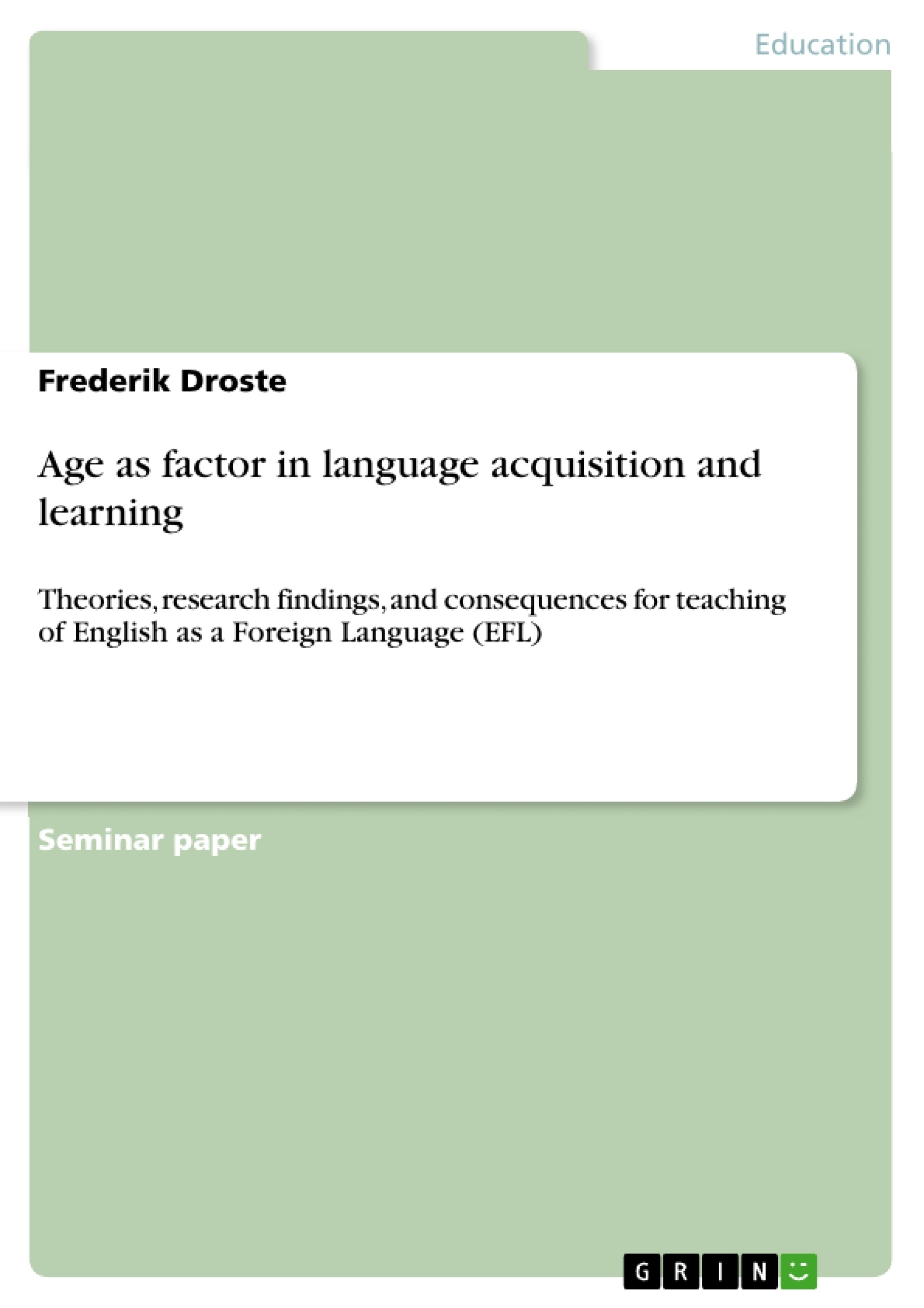[...] At the beginning of the semester, the students of the course concerned with the topic of “How
Languages are Learned” were asked to give an immediate response to several popular
opinions.
With the benefit of hindsight, one of the most interesting responses was that I ascribed much
importance to the following statement: “The earlier a second language is introduced in
school programmes, the greater the likelihood of success in learning.”(cf. L&S, p. xvii), and I
am sure that many of my fellow students agreed strongly as well.
After having studied several theories and research findings concerning this question – the
question whether there is the age in which a second language learner should start to get into
contact with a foreign language- I could conclude that this question cannot be answered
simply by “yes” or “no” since there is a great number of factors influencing success. Learners
vary a lot in terms of their brain’s development, their intelligence, their environment in which
a second language is spoken, etc. pp. Furthermore, in order to answer the age-question, it is
important to be aware of a certain goal of second language acquisition. Is it pronouncing
words like a native-speaker? Is it being able to take part in conversations? These factors and
questions should thus also be analyzed.
Consequently, I would like to present basic theories about this subject as well as research
findings and, as explained above, other factors influencing second language acquisition in the
following. The results will be supported by my own way of acquiring a second language and
will then form the basis for the consequences educators should consider when planning
foreign language lessons.
Since we used “How Languages are Learned” by Patsy M. Lightbown and Nina Spada as an
introduction to this topic, my elementary knowledge is based on this book. [...]
Table of Contents
2. Quantity Assignments
I. P-1: Stephen Krashen: “What Does it Take to Acquire Language?”
II. P-2: “Acquiring a First Language”
III. P-3: “Comprehensible Input”
IV. P-4: "How age may affect learning a second language."
V. P5: Learning Implications: the “good language learner” (interview)
VI. P6: Stages in Acquisition/Learning
VII. P7: Observing learning and teaching in the second language
VIII. P8: Six proposals for classroom teaching
3. Final Assignment
4. Bibliography
- Citar trabajo
- Frederik Droste (Autor), 2013, Age as factor in language acquisition and learning, Múnich, GRIN Verlag, https://www.grin.com/document/214713
-

-

-

-
¡Carge sus propios textos! Gane dinero y un iPhone X. -

-
¡Carge sus propios textos! Gane dinero y un iPhone X. -

-
¡Carge sus propios textos! Gane dinero y un iPhone X. -

-
¡Carge sus propios textos! Gane dinero y un iPhone X. -

-
¡Carge sus propios textos! Gane dinero y un iPhone X. -

-
¡Carge sus propios textos! Gane dinero y un iPhone X. -

-
¡Carge sus propios textos! Gane dinero y un iPhone X. -

-
¡Carge sus propios textos! Gane dinero y un iPhone X.

